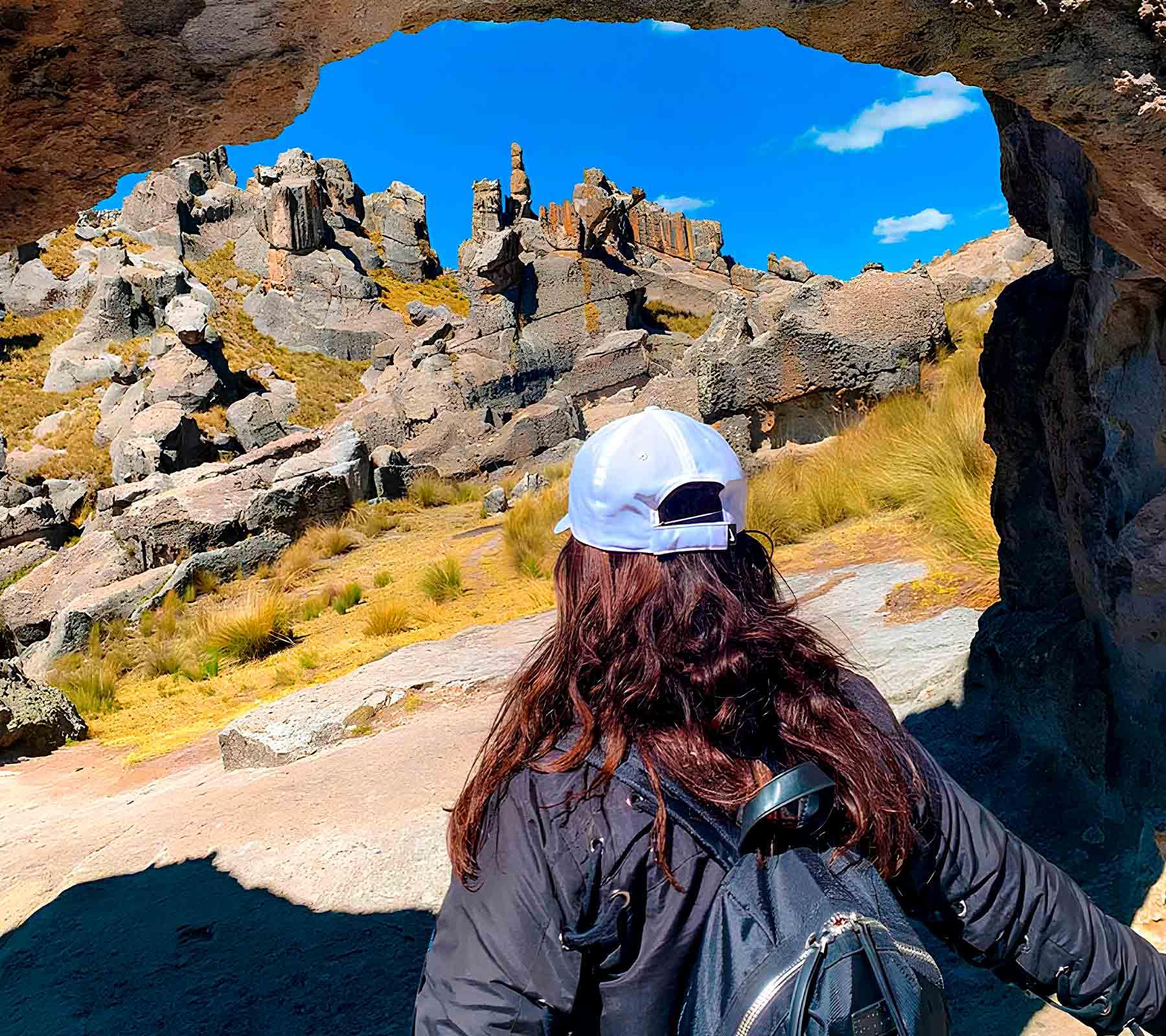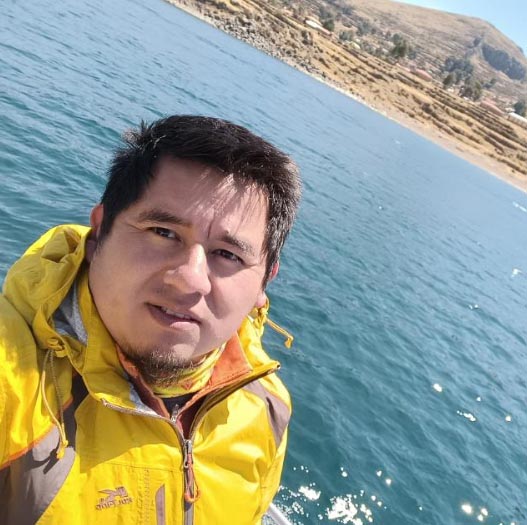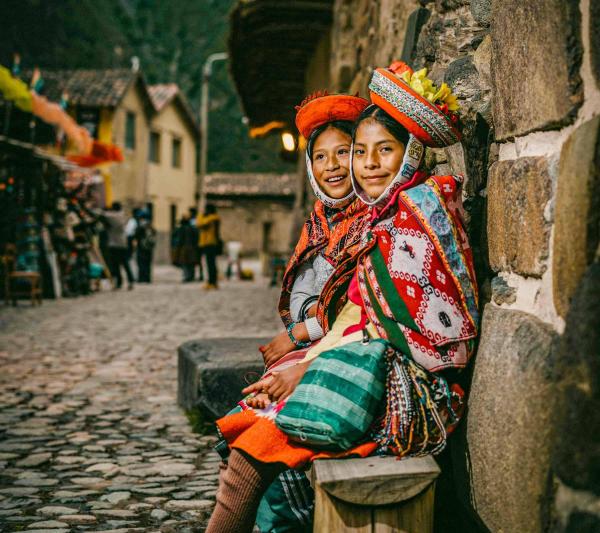The National Sanctuary of Huayllay, one of the 7 wonders of Peru, is the perfect place to practice adventure sports, connect with nature and enjoy the beauty of the Pasqueña geography.
Pasco hides a true wonder: the National Sanctuary of Huayllay, located 43 km south of Cerro de Pasco, at more than 4 thousand meters of altitude. The melting of glaciers and volcanic activity over millions of years have created impressive rock formations, with unique and fascinating figures. If you are a lover of adventure, nature and the spectacular landscapes of the Peruvian mountains, this is the perfect destination for you. We bring you four interesting facts about this beautiful stone forest, considered one of the 7 wonders of Peru.
Objective
Conservation of the upper basin of the Cañete River and the basin of the Pachacayo River, which house landscape ecosystems of great beauty and uniqueness and also coexist in harmonious relationship with the activities of the peasant communities.
Creation
On May 1, 2001, by Supreme Decree Nº033-2001-AG.
Location
Located in the districts of Tanta, Miraflores, Vitis, Huancaya, Alis, Laraos Tomas and Carania in the province of Yauyos, department of Lima and the district of Canchayllo in the province of Jauja, department of Junín.
Extension
221,268.48 hectares.
Description
The Huayllay Stone Forest is a rocky area, almost entirely (90%), of volcanic origin. It has an area of almost 7000 hectares, of great beauty and uniqueness. It is considered one of the 7 wonders of Peru, thanks to its more than 4,000 rock formations that resemble profiles of humans and animals, where you can practice adventure sports, mainly rock climbing.
The large rock monuments were formed by rocks and also sediments, because this area was part of the seabed in the Paleozoic. Thanks to the erosion of wind and water, for more than 70 million years, whimsical monuments have been formed, imitating silhouettes of people and animals.
The Huayllay Stone Forest has an outstanding tourist movement, mainly by national visitors, but in recent years the visit of foreign audiences has increased due to the Ruraltur, an event that takes place in the month of September focused to adventure and nature tourism.
For those who come to this wonder of Peru, they can take the opportunity to have a relaxing refreshment in the thermal baths of the place; They can also see the fauna that inhabits the place such as deer, vicuñas, wild cats, skunks, hawks and partridges. In the flora, the queñuales, huamampintas, putagas, among others, stand out. Another of the great peculiarities of this place is its spectacular starry sky at night.
Location
This wonder of Peru is located in the district of Huayllay, in the province and department of Pasco.
Climate and temperature
The area has a sub-humid and semi-frigid climate. The average annual temperature is 6°C. The rainy season is between September and March. Due to the rocks that store heat, they also generate the existence of several microclimates.
Altitude
The Huayllay Stone Forest is located above 4310 meters above sea level.
How to get to the Huayllay Forest?
To go to this great tourist attraction, there are 3 ways:
The first option is to go through the Central Highway, starting from Lima, continuing through La Oroya, Junín, Carhuamayo, Villa Pasco, Canchacucho, until you reach the Huayllay Stone Forest. The distance on this route is about 315 kilometers.
Another option is to go through the northern side of the capital, starting from Lima and passing through Canta, La Viuda, Huayllay, Canchacucho, until you reach the destination. This route has a distance of 230 kilometers.
You can also get there by air, through the Vicco Airport (district bordering Huayllay), which is located 15 kilometers from the Forest.
Adventure Sports
Rock climbing
Trekking
The rock formations of the Forest
The Huayllay Stone Forest is considered one of the Seven Wonders of Peru, which is why it is unmissable to travel to Pasco and practice climbing on its enormous human-shaped rocks.
This natural wonder has more than 4,000 rock formations, which mostly resemble profiles of humans such as the walker or the thinker, and animals, including the turtle, the alpaca, the condor, the elephant, the zebra, the dog. , the snail, etc.
What can we observe in the Huayllay Stone Forest?
In an area of 6,815 hectares, the Huayllay Stone Forest is home to more than 480 rock figures of great beauty and uniqueness, formed by ancient volcanic chimneys shaped by the erosion of wind, water, and melting glaciers.
The fauna has also adapted to this unique ecosystem. When you visit, you will find wild guinea pigs, deer, vizcachas, skunks, Andean foxes, llamas, alpacas, guanacos, vicuñas, wild cats and different species of rodents.
Adventures in Huayllay
The Huayllay Stone Forest has become one of the favorite places for adrenaline lovers. Mountain bikers, for example, travel a route that goes from 4,100 meters above sea level to 4,500 meters above sea level, which represents quite a challenge. The stone forest is also perfect for other extreme sports such as rock climbing and trekking. Its privileged location, contact with nature and the challenging nature of the route ensure that adventurers have a unique experience.
Rock paintings in the Huayllay Stone Forest
This national sanctuary keeps testimonies of the passage of man for 10,000 years. The evidence is the presence of more than 500 cave paintings throughout the forest, belonging to different moments in the history of the ancient Peruvians. The vast majority of the paintings are related to the domestication of Andean camelids. Thanks to them, archaeologists have managed to determine that, in the area, the domestication of llamas and alpacas would have begun around 6,000 years BC, but their incorporation as pack animals would date back to 4,500 BC.
What routes exist in Huayllay?
Currently, Sernanp, in charge of the care and maintenance of the Sanctuary, manages three main tourist routes:
Route 1. The tour takes an average of approximately two hours and you can see the following figures: the king’s crown, the tunnel, the bear’s prayer, the fish, the thinker, the dog, the snail, the turtle, the witch, the lizard, the red-handed lizard, the seal, the lamb, the nuns, the bride and groom’s kiss and the cobra.
Route 2. There are two options: by car, the journey takes about an hour and a half; on foot, between 3 and 4 hours. You will be able to see cave paintings and the figures of the angel, the elephant, the alpaca, the tourist, the mushroom, the condor, the toad and the porch.
Route 3. The route takes approximately 3 hours on foot. You can see the figures of the greeting, the child, the falcon, the face, the Roman and the dinosaur, as well as cave paintings.
Opening Hours
Every day from 8:30 a.m. to 5 p.m.






